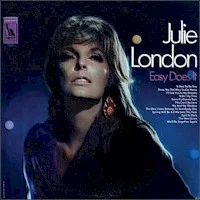Time: 41:22
File: MP3 @ 320K/s
Released: 2014
Styles: Jazz/Pop Vocals, Xmas
Art: Front
01. O Come All Ye Faithful (4:03)
02. Have Yourself A Merry Little Christmas (3:23)
03. I'll Be Home For Christmas (3:26)
04. Little Drummer Boy (3:58)
05. O Holy Night (4:41)
06. Heaven Everywhere (3:26)
07. Mary Did You Know (4:11)
08. My Favorite Things (3:57)
09. What Child Is This (3:53)
10. The Christmas Song (Feat. Calvin Norton) (3:01)
11. Go Tell It On The Mountain (3:18)
Cynthia Miller grew up singing with her sister and family around the piano as her father played and taught her to sing harmony. As a little girl in California she volunteered as much as she could in school to sing the song “This Land” after the Pledge. Her family relocated to Texas after her grandfather passed away. He pastored a church in Houston.
Cynthia always loved singing but like every artist she had her challenges. Early on she recognized her need to learn how to accept compliments while at the same time finding her place in music. And that she did find.
From her basic training to a professional career, she found herself on stage singing. Her voice opened many doors to sing the National Anthem for almost every major Houston sporting event, including The Houston Livestock and Rodeo Show, Houston’s Freedom Over Texas 4th of July events, and even NASCAR.
She recorded a five-song demo in 2003 titled “Reflections” with more of a gospel sound. This was followed by a self-titled CD in 2008 showcasing a jazzy-pop sound. In 2014, her Christmas CD entitled “A Simple Christmas” got back to basics and allowed the dynamic range of her voice to carry the emotion and nostalgia of Christmas.
Cynthia always loved singing but like every artist she had her challenges. Early on she recognized her need to learn how to accept compliments while at the same time finding her place in music. And that she did find.
From her basic training to a professional career, she found herself on stage singing. Her voice opened many doors to sing the National Anthem for almost every major Houston sporting event, including The Houston Livestock and Rodeo Show, Houston’s Freedom Over Texas 4th of July events, and even NASCAR.
She recorded a five-song demo in 2003 titled “Reflections” with more of a gospel sound. This was followed by a self-titled CD in 2008 showcasing a jazzy-pop sound. In 2014, her Christmas CD entitled “A Simple Christmas” got back to basics and allowed the dynamic range of her voice to carry the emotion and nostalgia of Christmas.
A Simple Christmas













